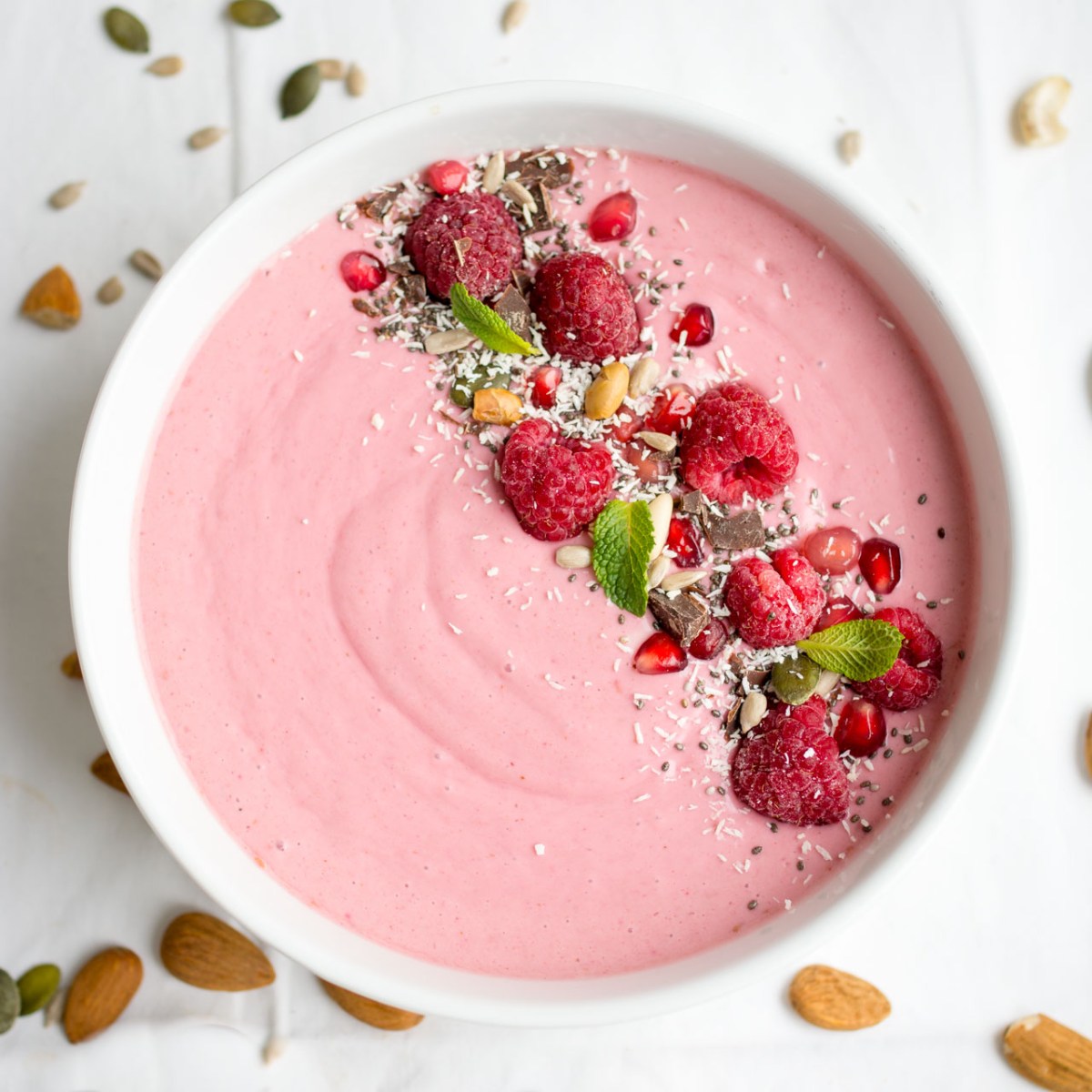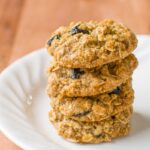Dive into the delightful world of creamy, dairy-free smoothie bowls! Imagine vibrant hues of tropical fruits swirling in a thick, luscious base, topped with crunchy granola and delicate edible flowers. This isn’t just a breakfast; it’s a vibrant canvas of flavor and texture, a testament to the versatility of plant-based ingredients. We’ll explore a range of dairy-free milks, uncovering their unique properties and how they contribute to the perfect creamy consistency. From mastering the art of freezing fruit to prevent icy surprises to creating stunning visual masterpieces with artful garnishes, this guide provides a complete roadmap to crafting unforgettable smoothie bowls.
We’ll journey through various creamy bases, exploring the thickening power of ingredients like chia seeds and avocado. Discover exciting fruit combinations, from classic berry blends to exotic tropical fusions, each bursting with unique flavor profiles. Learn to elevate your creations with a variety of toppings, from homemade granola to delicate edible flowers, transforming each bowl into a work of art. With step-by-step recipes and variations, you’ll soon be creating your own signature dairy-free smoothie bowl masterpieces.
Base Ingredients & Substitutions
Creating a luxuriously creamy dairy-free smoothie bowl hinges on selecting the right base. The choice of milk alternative significantly impacts the final texture and sweetness, influencing both the mouthfeel and overall flavor profile. Understanding the properties of different options is key to achieving your desired consistency.
Dairy-Free Milk Alternatives for Creamy Smoothie Bowls
Several dairy-free milk alternatives offer the creamy texture needed for a satisfying smoothie bowl. Each possesses unique characteristics regarding thickness and inherent sweetness, affecting the final product.
- Coconut Milk (Full-Fat): Provides an incredibly rich, thick, and naturally sweet base. Its distinct coconut flavor can be prominent, so consider this when choosing your other ingredients.
- Oat Milk: Offers a naturally creamy texture and a subtly sweet flavor, making it a versatile choice. It blends well with various fruits and flavors without overpowering them. Choose a thicker variety for best results.
- Cashew Milk (Homemade): Soaking cashews creates a remarkably smooth and creamy milk with a mild, nutty flavor. Homemade cashew milk allows for complete control over sweetness and thickness.
- Almond Milk: A widely available option, almond milk provides a lighter, less sweet base compared to coconut or oat milk. It might require additional thickeners to achieve the desired creaminess.
Three Unique Creamy Dairy-Free Smoothie Bowl Base Recipes
These recipes showcase the versatility of different milk alternatives and how they contribute to the final texture.
- Tropical Coconut Dream: 1 cup full-fat coconut milk, ½ cup frozen mango chunks, ¼ cup frozen pineapple, 1 tablespoon shredded coconut. The coconut milk provides an intensely creamy base, complemented by the tropical sweetness of the mango and pineapple. The shredded coconut adds texture and visual appeal. The result is a luxuriously thick, intensely flavorful bowl.
- Berry Oat Bliss: 1 cup thick oat milk, ½ cup mixed frozen berries (strawberries, blueberries, raspberries), 1 tablespoon chia seeds, 1 teaspoon maple syrup (optional). Oat milk contributes a naturally creamy texture, while the chia seeds act as a thickener. The mixed berries offer a vibrant color and a refreshing tartness. The resulting bowl is moderately thick and bursting with fruity flavors.
- Chocolate Cashew Cloud: 1 cup homemade cashew milk (soaked cashews blended with water), 2 tablespoons cocoa powder, 1 tablespoon maple syrup, ½ frozen banana. The homemade cashew milk creates an exceptionally smooth and creamy foundation. Cocoa powder adds richness and depth, while the banana provides sweetness and helps thicken the mixture. The bowl has a decadent, velvety texture with a subtle nutty flavor.
The Role of Thickeners in Achieving Creamy Texture
Several ingredients can enhance the creaminess of your dairy-free smoothie bowl. Their effectiveness varies depending on the desired consistency and the chosen milk alternative.
- Chia Seeds: These tiny seeds absorb liquid and create a gel-like consistency, adding both thickness and nutritional value. They require a little time to swell (at least 15 minutes), offering a subtly thicker texture.
- Flaxseed Meal: Similar to chia seeds, flaxseed meal acts as a thickener, adding a slightly nutty flavor. It also offers a boost of omega-3 fatty acids. It thickens more rapidly than chia seeds.
- Avocado: Adding a small amount of avocado (¼ – ½ an avocado depending on the size) contributes a remarkably creamy texture and a rich, healthy fat content. Its subtle flavor blends seamlessly with most smoothie bowl ingredients.
Nutritional Comparison of Dairy-Free Milk Alternatives
The nutritional profile of dairy-free milk alternatives varies significantly. Choosing the right option depends on your dietary needs and preferences. Note that values can fluctuate based on brand and specific ingredients.
| Milk Alternative | Calories (per cup) | Protein (per cup) | Fat (per cup) |
|---|---|---|---|
| Coconut Milk (Full-Fat) | 450-550 | 5-7g | 40-50g |
| Oat Milk | 100-130 | 2-4g | 2-5g |
| Cashew Milk (Homemade) | 80-120 | 2-4g | 5-8g |
| Almond Milk | 30-40 | 1-2g | 2-5g |
Presentation & Photography

Elevating your dairy-free smoothie bowl from a simple breakfast to a stunning culinary masterpiece involves thoughtful presentation and captivating photography. The right techniques can transform a delicious treat into a social media sensation, inspiring others to create their own vibrant bowls.
The ideal presentation emphasizes both visual appeal and the inherent deliciousness of the smoothie. A well-presented bowl invites the viewer to experience the texture and flavor even before the first spoonful.
Plating and Garnishing Techniques
Careful plating techniques are key to creating a visually striking smoothie bowl. Start with a bowl that complements the colors of your smoothie. A simple, shallow bowl allows for a wider presentation of toppings, showcasing their textures and colors. Consider the bowl’s material – a rustic ceramic bowl can enhance a more earthy smoothie, while a sleek, modern bowl works well with brighter, more vibrant creations. The smoothie itself should be smoothly textured and evenly distributed, creating a clean base for the garnishes. Garnishes should be strategically placed to create visual interest and balance. Think about color contrast – a vibrant pop of color against a neutral base. Consider using fresh berries, chopped nuts, seeds, shredded coconut, granola, or even edible flowers for an elegant touch. Arrange the garnishes thoughtfully, avoiding overcrowding the bowl. A few carefully placed elements are often more effective than a chaotic scattering. For example, a swirl of nut butter, a line of seeds, or a cluster of berries can add visual interest and texture.
Photography Techniques for Smoothie Bowls
Capturing the essence of your creation requires mastering a few photography techniques. Natural light is your best friend. Shoot near a window on a bright day, utilizing soft, diffused light to avoid harsh shadows. Avoid direct sunlight, which can wash out the colors of your smoothie and toppings. A white or light-colored background helps the smoothie bowl stand out, drawing the viewer’s eye to the vibrant colors and textures. Consider using a tripod to ensure stability and sharp focus. Experiment with different angles – a slightly overhead shot often works best, showcasing the entire bowl and its garnishes. Pay attention to the depth of field – a shallow depth of field can blur the background, emphasizing the smoothie bowl. A macro lens can highlight the texture of individual components.
Color Contrast and Texture Variation
Color contrast and texture variation are crucial elements in creating a visually appealing smoothie bowl. The interplay of colors and textures stimulates the appetite and creates a sense of excitement. Consider using a variety of colors in your smoothie and toppings. For instance, a deep green smoothie base could be complemented by bright red berries, crunchy granola, and creamy coconut flakes. This creates a visually stimulating contrast that is both pleasing to the eye and appetizing. Similarly, the interplay of textures adds depth and dimension. The creamy smoothness of the smoothie contrasts beautifully with the crunch of granola, the chewiness of berries, and the softness of coconut flakes. This multi-sensory experience elevates the overall appeal of the bowl.
Video Script: Creating a Visually Stunning Dairy-Free Smoothie Bowl
[Scene: Close-up shot of hands blending ingredients in a high-powered blender. Smooth, creamy sounds of the blender.] The narrator says, “Start by combining your chosen base ingredients – frozen bananas, dairy-free milk, and a touch of sweetener – in a high-powered blender. Blend until completely smooth and creamy.” [Scene: The blended smoothie is poured into a beautiful bowl. The camera pans to showcase the bowl’s shape and color.] The narrator continues, “Pour the vibrant mixture into your chosen bowl, ensuring an even distribution for a clean and appealing base.” [Scene: A variety of colorful toppings are arranged artfully around the bowl. Close-ups showcase the texture of each topping.] “Now, let’s get creative with our garnishes! Fresh berries add a pop of color and sweetness, while crunchy granola provides delightful texture. A sprinkle of shredded coconut adds a touch of tropical flair.” [Scene: A final, sweeping shot of the completed smoothie bowl, bathed in soft, natural light.] The narrator concludes, “With a few simple steps, and a touch of artistic flair, you’ve transformed a simple smoothie into a visually stunning and delicious masterpiece. Enjoy!”
Creating creamy dairy-free smoothie bowls is more than just blending ingredients; it’s an artistic expression of flavor and texture. By mastering the techniques and understanding the nuances of different dairy-free milks, fruits, and toppings, you can craft personalized bowls that are as visually stunning as they are delicious. From the smooth, creamy base to the vibrant array of toppings, each element contributes to a symphony of flavors and textures that will tantalize your taste buds and delight your eyes. So, gather your ingredients, unleash your creativity, and embark on a journey to create smoothie bowls that are as unique and individual as you are.
FAQs
Can I make smoothie bowls ahead of time?
It’s best to assemble smoothie bowls just before serving to prevent the base from becoming watery. However, you can prepare the base and toppings separately in advance.
What if my smoothie bowl is too thick or too thin?
Adjust the consistency by adding more dairy-free milk for a thinner bowl or more frozen fruit for a thicker one.
What are some other dairy-free milk alternatives I can use?
Oat milk, soy milk, and almond milk are all excellent options, each offering a slightly different flavor and texture.
How long can I store homemade granola?
Store homemade granola in an airtight container at room temperature for up to two weeks.
Can I use fresh fruit instead of frozen?
Yes, but you may need to add more ice to achieve the desired consistency. Frozen fruit creates a thicker, colder bowl.


